Developing and Field trialling a household level urine diversion toilet.
Background.
CBS has been piloted in displacement contexts on a small scale[1] but it remains a niche area. A number of CBS organisations focus on waste to value initiatives[2] however none are currently commercially viable [3] .
Research clearly shows that a significant proportion of disaster affected people do not use the communal sanitation facilities that humanitarian agencies provide. Individual or shared household latrines immediately adjacent to dwellings typically address the barriers that communal toilets pose and are preferred by disaster affected populations, however, it is rarely possible to construct these in the early stages of a response.
A significant number of people living with special needs (PSNs) are not able to use shared communal or household latrines.
Household dry container based toilets could provide a rapid solution to ensure PSNs and wider camp population has access to a toilet in their home or within immediate access to their dwelling.
In ESP phase 1, Oxfam supported a Kenya based partner to trial the mo-san (container based toilet) in Kakuma camp. In parallel with ESP we organised a toilet summit attended by leading organisations in the field of container based sanitation (CBS),
and developed a household level container based toilet, known as the iHUD (in-home urine diversion) toilet.
How does the iHUD work?
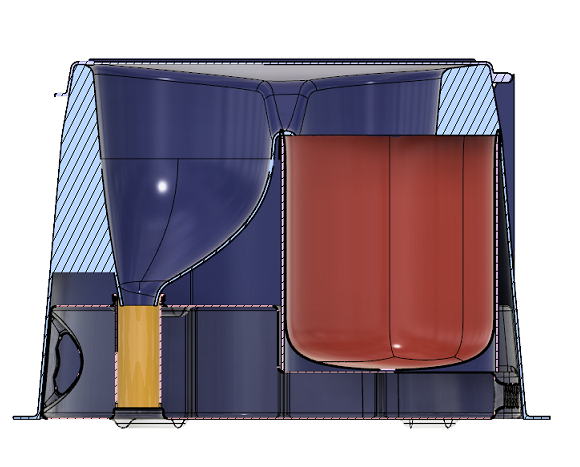
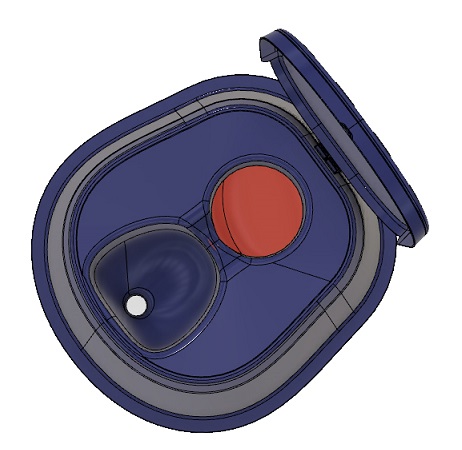
The iHUD is a dry urine diversion toilet. The toilet comprises four components 1) body, 2) lid (1 & 2 both injection molded), 3) urine tank (roto molded), 4) faeces vessel (currently consisting of section of 6 inch pvc pipe) and plastic bag (alternatively a re-usable plastic container can be used). The body rests on the urine tank which is used to transport urine to the point of disposal. To enable uninterrupted use, a second urine tank for each toilet may be required.
Oxfam started working on household container based sanitation in Kenya in 2010 as a potential solution to address sanitation needs in densely populated urban slums. Since identifying a like minded partner in 2013, this work has been led by Sanergy.
Sanergy had introduced the iHUD into their business model under the brand name “Freshfit” to complement their core business of public pay toilets, known as “Freshlife”. The challenges of providing sanitation in urban slums are similar to a displacement setting.
Requirements
The iHUD is portable so theoretically does not require a superstructure. A dedicated space – such as a toilet or bathing structure – is preferred for privacy, hygiene and odor management, similar to a toilet or bathing superstructure but this could be another space within or immediately outside the shelter or dwelling. Requirements will depend on cultural norms, privacy and preference of different users.
Disposal of waste
Where IHUD toilets are deployed on a small scale it may be possible for users to self manage and be responsible for safe disposal of waste. For PSNs this would require a carer to take the waste and dispose of in the nearest toilet. As numbers increase, risks and consequences of exposure to waste increase through spillage or irresponsible/indiscriminate disposal. Therefore the need for a systematic, controlled process increases, which can better be managed through a dedicated sanitation service provider following an agreed set of standard operating procedures. This can become an expensive and logistically complicated process so needs to be fully considered as part of any decision to introduce container based toilets. Waste collection and management can become very cost-efficient with a dense network of toilets. Experience from Kenya indicates that minimum emptying of twice per week is required to avoid overflowing and manage smell.
Work carried out in Phase 2
Under ESP2, the iHUD has been re-designed to make it suitable for the humanitarian market – namely to simplify the production process, redesign the toilet to make it lighter, nestable and stackable for efficient transport, easier to service and empty and ultimately reduce the unit cost. This work has been led by Sanergy, a Kenyan based social enterprise who provide a toilet provision and servicing franchise within urban low income settlements.
Following a consultation process with existing users of the iHUD and service operators who collect, empty and clean toilets, the following design modifications were made:
- urine tank enlarged (from 16-24 litres capacity) and modified to simplify cleaning and enable stacking (10 tanks can be stacked to improve ease of distribution and collecting).
- urine funnel modified for improved nesting of bodies
Using this revised design, a fully functional prototype was 3 D printed and field trialed in Mukuru settlement, Nairobi.
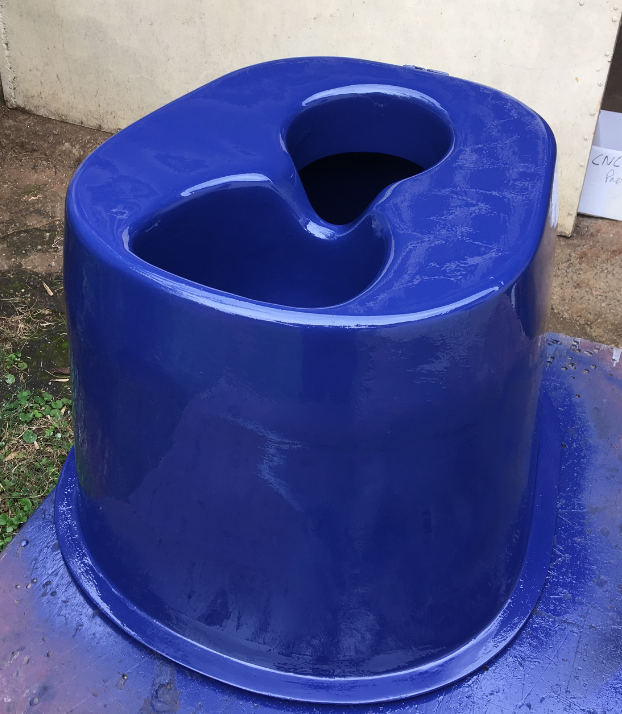
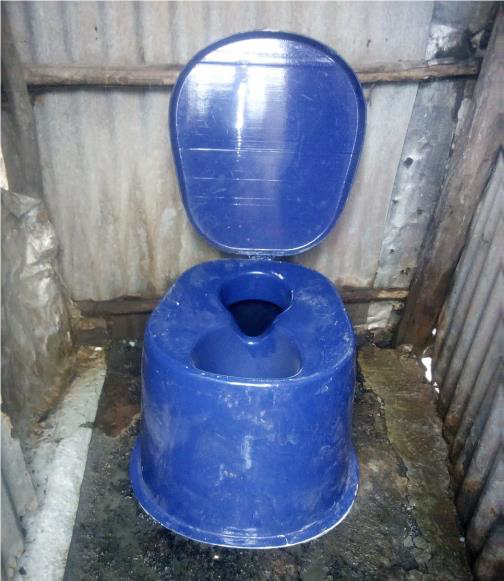
The field trial identified that the toilet hinge was a weak point and the rim at the base of the toilet made it unsuitable for uneven ground.
The Sanergy team used virtual reality as part of their marketing approach to illustrate to potential customers about the benefits of owning an iHUD.
Further refinement has resulted in the following final toilet design.
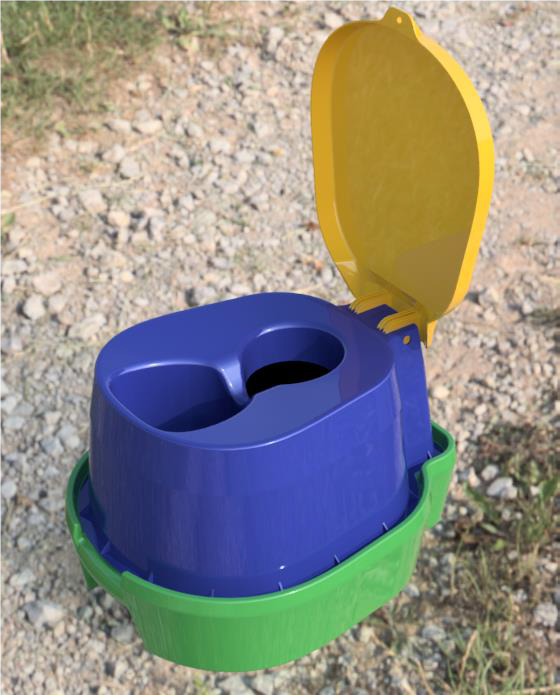
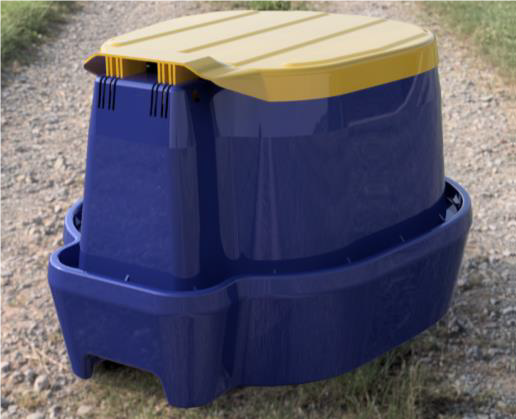
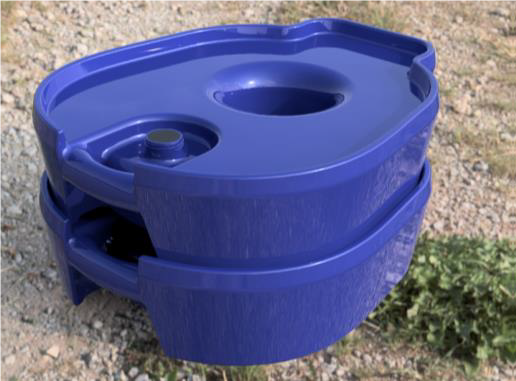
Next steps
Sanergy sees the value of the iHUD for its own business and is committed to setting up production of the improved iHUD in Kenya for its own “Freshfit” enterprise. Sanergy is confident it can resource this initiative and is currently in the process of obtaining quotes for manufacture of moulds to enable mass production of the iHUD. This will be achieved through a combination of rotomoulding (for the urine tank) and injection moulding (for the lid and toilet body).
It is anticipated that by September 2019, the final iHUD will be available to buy at a cost of $55
Additional Considerations
- CBS is a relatively new and untested concept to humanitarian contexts and at the time of writing had not been applied and proven at scale.
- Long term operation costs need to be factored in from the start as if an external servicing model these recurrent are significant.
- CBS is premised on the basis of safe collection and disposal of waste at designated sites. If this is compromised CBS could contribute to a disease outbreak. With a servicing model, SOPs can be put in place and monitored (subject to funds), where individual households are responsible, strong community mobilization is required.
A more detailed write up of activities and findings carried out during this project is include here.
[1] Most notably by Sanivation in Kakuma refugee camp, Kenya.
[2] Organic compost, animal feed, biogas, fuel briquettes.
[3] Without considering a holistic approach and the health and environmental implications and costs of poor sanitation
For more information please contact:
Brian McSorley, Water & Sanitation Advisor at Oxfam
Email: brian.mcsorley@oxfam.org